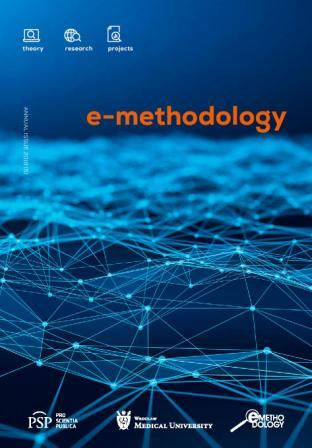Developmental prosopagnosia in Poland: an analysis of online-conducted population based study
Developmental prosopagnosia in Poland: an analysis of online-conducted population based study
Author(s): Karol Marschollek, Marta Nowakowska-Kotas, Paweł Marschollek, Julia Marschollek, Gerald Drożdż, Jerzy Drożdż, Sławomir BudrewiczSubject(s): Media studies, Neuropsychology, Health and medicine and law, ICT Information and Communications Technologies
Published by: Fundacja Pro Scientia Publica
Keywords: developmental prosopagnosia; polish population; online tools;
Summary/Abstract: Background and aim of the study: Developmental prosopagnosia (DP) is defined as impaired face recognition in the absence of brain injury or intellectual defi cit. Because of the complexity of validated face memory and perception tests, its online distribution greatly improves the effectiveness and convenience of conducting research. Assessment of DP occurrence in the Polish population concerning study sample collection and characteristics. Material and methods: An online questionnaire consisting of the 20-item Prosopagnosia Index (PI20) was administered to assess self-reported problems with face recognition. Cambridge Face Memory Test (CFMT) and Glasgow Face Matching Test (GFMT) were applied to assess respondents’ face memory and perception. Additional data on respondents’ gender, age and handedness were also obtained. All of the components were arranged together using Google Forms tool. Respondents were recruited via social media announcements. The study was conducted from 1st January to 31st March 2019. Each of the respondents was provided with personalised results analysis, which was sent with an e-mail. They were also able to stay in contact with research authors, asking additional questions and giving remarks. Results: During the study, a total of 1349 questionnaires were collected, out of which 1276 met inclusion criteria and were enrolled in the study. 66.1% of the respondent group were females and 33.9% males. The mean age was 28.3 ± 9.5 years (range: 14-75). The mean PI20 score was 49.6 ± 18 (range: 20-99). In 11.8% of respondents PI20 result indicated self-reported mild, in 8.3% moderate and in 3.9% severe DP. The mean CFMT total score was 58.1 (median: 59, range: 26-72) and mean GFMT score was 33.9 (median: 34, range: 18-40). According to the cutoff values from original papers, 81 (6.3%) of respondents scored below threshold in CFMT, 27 (2.4%) in GFMT. Out of 50 respondents who self-reported symptoms indicating severe DP, only 15 (30%) scored below the cutoff in CFMT and 6 (12%) in GFMT. On the contrary, 30 (3.1%) and 16 (1.4%) out of 970 respondents reporting no problems with face recognition had total scores below the cutoff in CFMT and GFMT, respectively. Conclusions: The estimated prevalence of developmental prosopagnosia in Polish population is higher than in normative data. These discrepancies may result from specific demographics of participant group more than an online-character of the study. It is important to focus on experiment design and methodology in order to maintain high quality of collected data. Development of country-specific norms and stimuli for face-recognition tests should also be considered.
Journal: e-methodology
- Issue Year: 6/2019
- Issue No: 6
- Page Range: 57-64
- Page Count: 8
- Language: English

